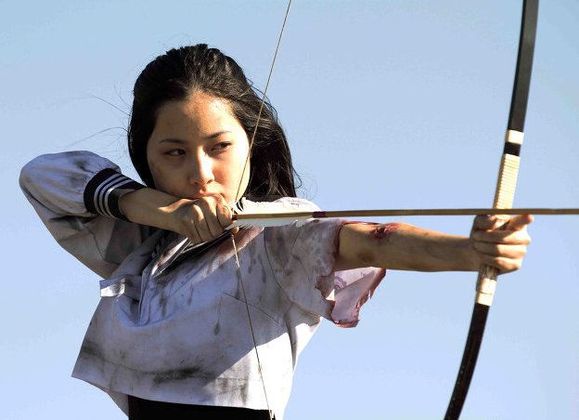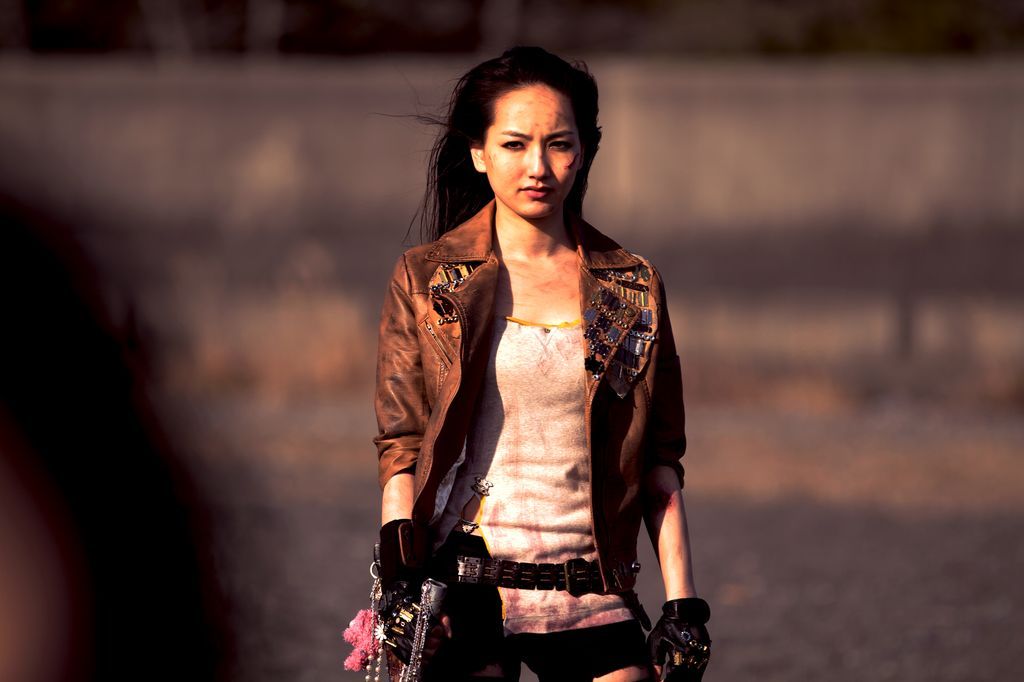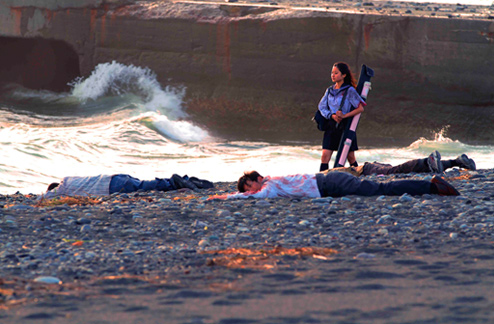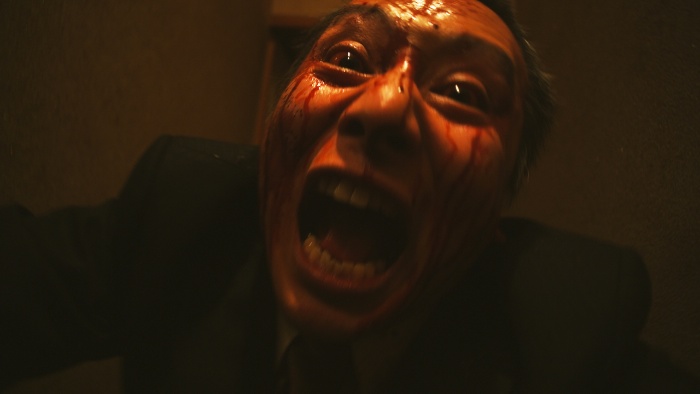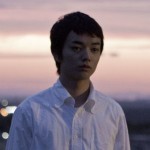SCHOOLGIRL APOCALYPSE, MONSTROUSLY YOURS
SCHOOLGIRL APOCALYPSE, MONSTROUSLY YOURS
John Cairns cheap discount levitra speaks with Marybel Gervais about the creation of an independent work in Japan and the pursuit of our dreams.
By Marybel Gervais
(Translated by Adam Abouaccar)
If your idea of a good time is seeing what happens when a very strange yet traditional Japanese tale meets a modern zombie gore film, see Schoolgirl Apocalypse. This combination might seem odd at first glance, but the two display a surprising harmony thanks to us cialis the ambition and attention of director, screenwriter and producer John Cairns. His dedication has allowed him to direct his first feature film, a dream he has entertained for quite some time.
The peaceful, almost boring world of Japanese student Sakura is now a thing of the past; her reality now consists free sample pack of cialis of a fight for survival against all men. While the cause remains unknown, they have transformed into horrible mutant zombies with a strong penchant for violence. Her path crosses those of other women living through this same event the best they can. In her desperation, Sakura begins having hallucinations featuring a character from her English textbook. She will cling to these brief moments of escape in order to get through this brutal, engulfing reality.
After several years of polishing the screenplay, Cairns’ film has finally seen the light of day. He was kind enough to candidly offer up a glimpse of his creative process.
You are originally American. You did your film studies in Paris and, fifteen years ago, you moved to Japan. What draws you to Japanese cinema?
If you drill even deeper you’ll find I’m a mix of East Indian, Welsh, Jewish, African and Laplander-Swede. I didn’t exactly fit in where I grew up in the American Midwest so I often dreamt of living somewhere far away. Once upon a time, Japan seemed like the farthest, most exotic place I could ever live. I didn’t intend to stay, but like many expats it altered me to the point I now find it hard to return to the States.
Living or filming in Japan is often a kind of shell game. I keep looking under things for meaning but never find that elusive spirit I know must be there. I think we miraculously captured some of that spirit in Schoolgirl Apocalypse though.
Schoolgirl Apocalypse is your first feature film. What was the jumping-off point?
After years of flinging scripts about, I had the amazing good fortune of the master producer, Yukie Kito, liking the first fifteen or so pages of the script for Schoolgirl Apocalypse. The rest of the script was pretty inane so it took another year under her supervision for me to develop it into something worth shooting. Without her it wouldn’t have gotten made – or at least shouldn’t have gotten made. This and the guidance I received from other pros at the 2010 NAFF project competition at the Puchon Fantastic FilmFest pretty much sealed the deal.
Where did you find the inspiration for the look and story of your film? What feeds your imagination?
My first four years in Japan were in a remote village in Aomori prefecture, one of the most conservative and traditional areas of Japan. I had a lot of time on my hands so I began translating the manga of Kazuo Umezu, a true genius of horror comics. Many years later I was able to interview Umezu-san for an article I wrote for Tokyo Pop magazine. I’d see him from time to time and he gave me advice on my story-telling. I’d say the landscapes of Aomori and the art and story-telling style of Kazuo Umezu were the greatest influences on this film. Of course Danny Boyle’s 28 Days Later and a handful of other films also gave me context.
There are many ways for a director to show an audience that a character is dreaming. Sakura’s dream sequences are in 2D animation. What was your reason for this choice?
To pay back my film school student loans I taught English in Japan. There was this text-book series every kid had to use called New Horizons. In these books there was almost always a Japanese girl interacting with a blonde-haired foreign boy. Their relationship was so odd in that they didn’t seem to know each other well, yet they trusted each other implicitly. I believe this social paradigm remains embedded in the psyche of most Japanese schoolgirls and women. In the film I call the text Blue Vistas and follow the same social equation. Without giving any spoilers, 2D animation is the best way to represent the flattened space where the main character, Sakura, finds temporary refuge from the insane world around her. It is her textbook coming to life as more a hallucination than a dream.
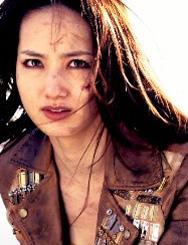 What motivated you to create an antihero?
What motivated you to create an antihero?
Primarily I wanted to examine how women with different backgrounds would react to this particular type of apocalypse. In the antihero, Aoi, I wanted a character that is inherently territorial and doesn’t appreciate other women encroaching on her lair. In addition, I wanted multiple threats driving Sakura forward to her given end. The crazed men ‘zombies’ are a brute threat whereas Aoi is more calculating and crafty. I have to admit though that due to budget constraints I couldn’t develop Aoi as much as I’d wanted. I’ve written a novel version of Schoolgirl Apocalypse (available on amazon.com) in which the plot as a whole and the character of Aoi is much more fleshed out.
You pay special attention to your choice of shooting locations. How does this contribute to your film as a whole?
I still feel sorry for the location liason from the Numazu Film Commission. I really put him through hell to find very specific locations. He was such a good sport about it and spent countless hours searching based on dreamy sketches I’d given him. At the time it seemed like the right thing to do but it wasn’t until one audience member in Korea called it an “epic road film” that I realized how ambitious it had all been (considering we shot in less than two weeks!). I really wanted to maintain a sense of oppressive claustrophobia until the end of the film, like someone going deeper and deeper into a tunnel until finally a day-lit vista is almost too much to bear.
It is often said that the Japanese public is not very receptive to horror films. What do you think?
My Japanese wife loves horror but she is definitely the exception to the rule. It’s true that most Japanese adults don’t like horror. It’s mystifying because as kids they seem to love it. It’s as if they become more sensitized to horror as they get older – is that possible?
Unfortunately the lack of audience means even the bigger J-studios expect horror directors to make films on impossibly meager budgets. I don’t know why but dramas about cancer-stricken loved ones who smile faithfully to the bitter end are all the rage in Japan right now. There seem to be no end of these weepy films and they appear to be well-funded. Truly more horrible to sit through than any horror film.
_____________
SCHOOLGIRL APOCALYPSE screens on july 30th at 10:05pm in the J.A. De Sève Theater hosted by the director/writer John Cairns and the creature designer Mai Kojima. More information on this film HERE.

 July 30, 2012
July 30, 2012  No Comments
No Comments
